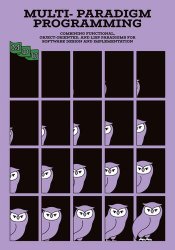- Добавил: literator
- Дата: 19-06-2025, 03:42
- Комментариев: 0
 Название: Multi-Paradigm Programming: Combining Functional, Object-Oriented, and Lisp Paradigms for Software Design and Implementation
Название: Multi-Paradigm Programming: Combining Functional, Object-Oriented, and Lisp Paradigms for Software Design and ImplementationАвтор: Marty Yoo
Издательство: Leanpub
Год: 2025-04-28
Страниц: 440
Язык: английский
Формат: pdf (true), azw3, mobi, epub
Размер: 10.1 MB
Multi-Paradigm Programming shows how to blend object-oriented, functional, imperative, and logic styles into a single, pragmatic toolkit. How can we effectively leverage modern programming languages that support object-oriented, functional, and imperative paradigms all at once? In the past, programming languages were largely divided into functional, object-oriented, and procedural languages. However, this trend has changed. With the rise of hybrid programming languages that incorporate both functional and object-oriented features, most major programming languages—such as Java, C#, Scala, TypeScript, jаvascript, Kotlin, and Swift—are now considered multiparadigm. This has become a common characteristic of languages widely used in the industry. These languages support not only object-oriented features like classes, inheritance, and interfaces, but also a broad range of functional programming capabilities including first-class functions, list processing, lazy evaluation, and asynchronous/concurrent operations. Additionally, they offer flexible type systems, type inference, generics, and utility types, and can even mix static and dynamic typing.









